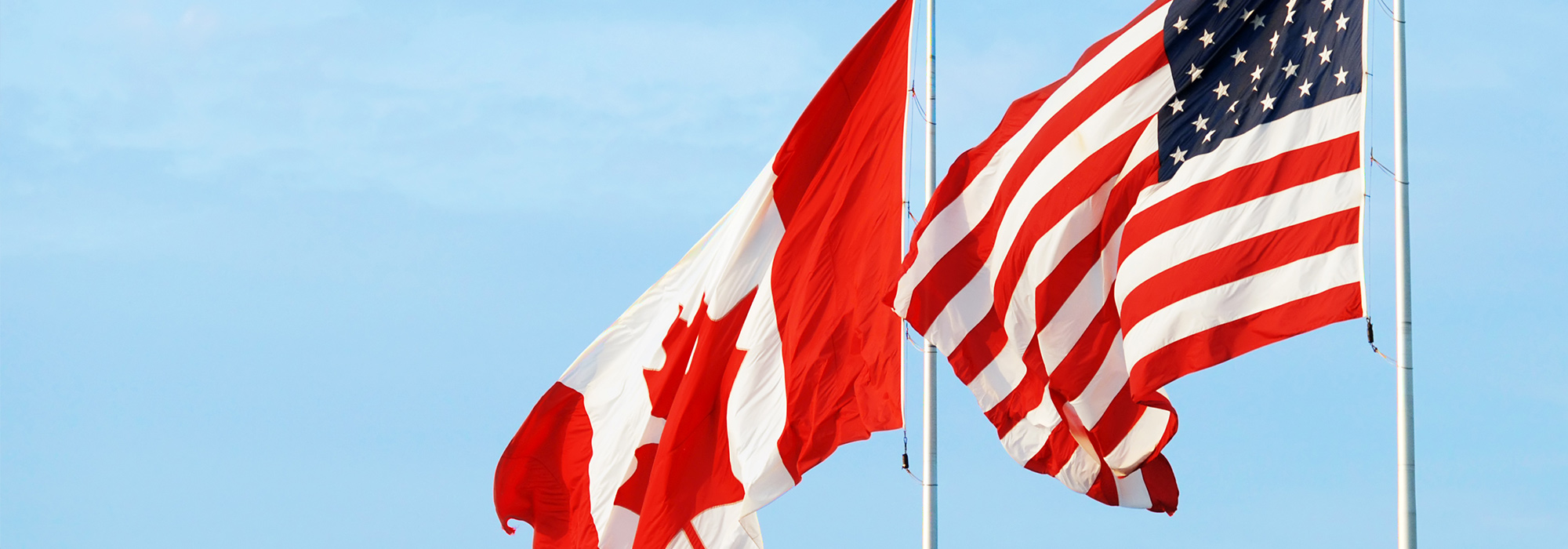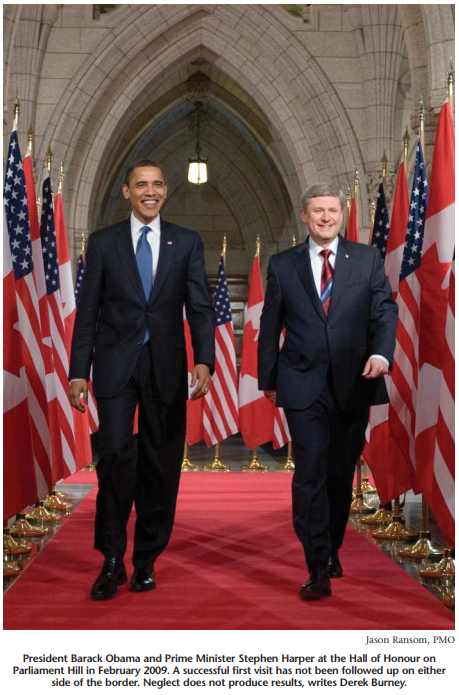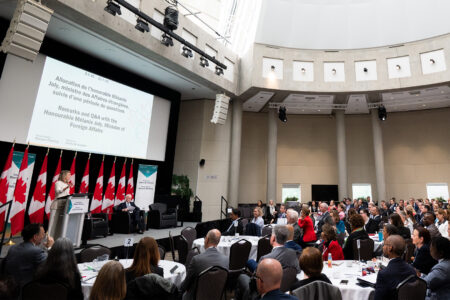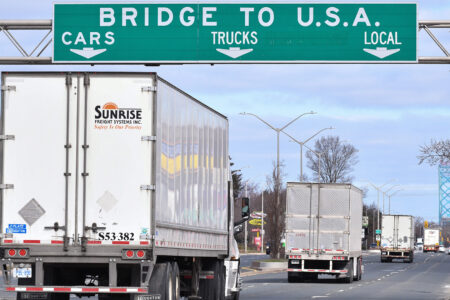
Canada’s relations with the Obama administration started with a flourish — an enthusiastic first foreign visit by the newly elected president in February 2009 — but they seem to have plateaued ever since. When Barack Obama was elected, he was even more popular in Canada than in the US. That is undoubtedly still true. Canadians tend to be more comfortable with a Democrat as president even though this attachment often belies productive engagement. There was certainly scope and receptivity in Canada for a bold new partnership with the US. And yet neither government has sought to exploit that opportunity. Neither the substance nor the symbolism of the relationship has been at centre-stage. Disappointingly, contact between the leaders since the Obama visit has been essentially on the margins of multilateral (and trilateral) meetings. When there are not regular meetings at the top, the bilateral agenda becomes rudderless. We are assured diplomatically that the two leaders “get along well” but this is not worth much unless it translates into policy priorities and initiatives that are in the mutual interest.
A glass-half-full analysis would say that, as there have been no major crises, problem avoidance or the path of least resistance represents a significant achievement in itself. The glass-half-empty counter to this would point to the absence of tangible engagement and the lack of direction for the relationship. Given the power imbalance, the ideas and the initiative for change usually rest with Canada, but not much of either has evolved. A triumph perhaps of prudence over purpose. For better or worse, the two governments did collaborate closely to bail out two struggling auto manufacturers — GM and Chrysler — and from all appearances, Canada played a lead role in shaping the parameters of the deal to reflect our 20 percent stake. (It remains to be seen whether the two governments will be reimbursed.)
It is not unusual for the US to disregard or “take for granted” the importance of Canada in terms of trade, energy, security and/or our shared environment. What is unusual is for this blasé approach to be reciprocated by Ottawa.
President Obama is obviously bogged down with major domestic challenges — a jobless recovery and soaring deficits that dominate the political landscape in Washington and obscure what little attention, let alone success, he has had on foreign policy. Protracted wars in Iraq and Afghanistan, the perennial quest for elusive peace in the Middle East, along with sporadic attempts to engage strategically with China and to “reset” relations with Russia have been priorities for the White House, leaving little time (or room) for Canada. Washington is also concerned about drug trafficking, organized crime and illegal immigration from Mexico, which puts the lie, at least for Canada, to the utility of trilateralism. The Canada-US agenda has a very different host of issues.
Meanwhile, Prime Minister Harper, hobbled somewhat by the minority status of his government, concentrated for the most part this year on the more immediate challenges of hosting back-to-back summits and making up for lost time vis-à-vis China. At a time when America’s economic power is on the wane, and its hand on the global political tiller is less than firm, Canada may have grounds to keep some distance from Washington rather than seeking to move the relationship forward. But, in the absence of much else on foreign policy, inattention to Washington is not a luxury Canada should indulge. Neglect pays no dividends.
The two governments may have less in common in terms of ideology — a handicap in itself — and even on the role of government, but the integrated nature of our economies, the significance of our shared security and other mutual interests necessitate higher levels of attention and more systematic engagement. Mutual interest should transcend politics and personalities of the moment.
When there are not regular meetings at the top, the bilateral agenda becomes rudderless. We are assured diplomatically that the two leaders “get along well” but this is not worth much unless it translates into policy priorities and initiatives that are in the mutual interest.
There have even been some signs that the relationship was sliding backwards. The shrill, condescending tone of public comments by Secretary of State Hillary Clinton during her visit to Ottawa earlier this year were not indicative of a close, “getting along well” partnership. Until recently, there appeared to be a serious disconnect between the two governments over the war in Afghanistan. Where initially the Conservatives were firm while the Obamacrats harboured some misgivings, the positions have been almost reversed. The US increased its troop commitment substantially even though according to Bob Woodward’s latest book — Obama’s War, the President’s commitment to the strategy is “weak.” Prime Minister Harper sounded increasingly as if Canada could not get completely out fast enough. Belatedly, following consultations with key allies, notably the US, Canada is more likely to take on a training role when the combat mission in Kandahar terminates in the summer of 2011. It is also hoped that our quiet and increasingly successful diplomacy in the region through the leadership role we are playing in the Dubai Process will continue and will get the requisite resources and internal support needed to sustain it. What seemed to be a major gulf in strategic thinking over what has been Canada’s most substantial military commitment since Korea stemmed in no small part from a deficiency in political dialogue at the senior level. It does now seem, however, that Canada’s sacrifice of blood and treasure in the most desperate region of this increasingly exasperating struggle will not have been for nought. If, as some claim, US support for Canada’s Security Council bid was tepid, that would reflect a breakdown in basic diplomatic engagement.
Closer to home, obstacles are emerging in our economic partnership that undermine the highly integrated nature of our two economies. The fact that the US faces a lengthy and painful period of adjustment before robust growth returns is not good news for Canada. But, even with weak growth prospects, the US market makes up 30 percent of Canada’s GDP and, with a mix of creativity and commitment, could be better safeguarded and advanced. Canada is still the top export market for the US, and, for an administration pledged to double exports in five years, one would have thought bilateral trade issues would command more positive attention.
More often than not the focus has gone in the opposite direction. Open, unfettered access across our shared border is plagued by incremental, pernicious blockages in the US that are blatantly protectionist but dressed up in the name of “security.” The Foreign Manufacturers Legal Accountability Act moving through Congress is the latest manifestation of protectionism wrapped in the cloak of “accountability.” While aimed specifically at China, like most congressional fusillades, this measure will sideswipe all US trade partners, notably Canada. From measures like this and the earlier Buy American fiasco there is little to suggest that congressional relations are being managed strategically and consistently. But, to be other than defensive in nature, trying to fix problems after the fact, networking with Congress needs a positive agenda underpinning political overtures to the Administration.
Using 21st century technologies to safeguard security while, at the same time, facilitating better access for legitimate movements of people, goods and services would make much more sense and should command a much higher priority from both governments. It should be a time to streamline both customs procedures affecting our shared border and outdated, inefficiently differentiated regulations and standards that undermine productivity. But there has been little action on either. Without firm political direction, bureaucratic mindsets will remain entrenched.
The institutional framework for the Canada-US relationship is remarkably thin. We have relied perhaps too much on informal, personal contacts between politicians, officials and members of the armed forces. It is more than time in my view to establish a new bilateral border commission charged specifically with streamlining entry provisions along our shared border while heightening and modernizing our joint capacity to defend against security threats. This would specifically include closer police collaboration to combat terrorism, illicit traffic in drugs, the activities of organized crime and the 21st century risks from cyberspace.
On trade negotiations, and despite the extent to which NAFTA has drawn us closer together, the two governments seemingly have different, if not conflicting, priorities. Canada is pursuing negotiations with the EU and seems to have given up on Korea. The Obama administration is belatedly trying to resuscitate free trade negotiations with Korea. Since one major impediment for both with Korea is the auto sector — the industry both governments helped salvage — one would have thought that there might have been scope for common cause in these trade negotiations using NAFTA as the base. But, here again, serious engagement requires determined dialogue and firm direction from the top.
To add insult to injury on the trade front, the US is now blocking Canada’s effort to join the Trans-Pacific talks, ostensibly because of Canada’s reluctance to put supply management for dairy and poultry on the table and because of purportedly lax enforcement of IP (intellectual property) protections. Hardly indicative of commitment and inspired leadership favouring a more constructive partnership.
The one area where an attempt has been made to engage is the “Clean Energy Dialogue.” Environment Minister Jim Prentice has tried persistently to establish common ground with the Obama administration. The rationale for common cause on energy security and climate change is undeniable. And yet progress to date has been scant. The Obama administration, captured by its own cap-and-trade rhetoric, encouraged legislation from Congress that had anything but energy security or environmental safeguards in mind. Heavily loaded to favour “Old King Coal” — and the 27 states that rely heavily on the most carbon-intensive fuel for power — the House bill sought to discourage large hydro imports from Canada and stimulated outlandish concerns about the Canadian oil sands. Although the House bill died in the Senate, the myopic vision of US political leaders is troubling.
It is time for some frank talk and less political posturing about energy and the role for Canada in meeting, to our mutual benefit, America’s energy needs. Make no mistake. The US cannot achieve the goal of “energy independence” from the Persian Gulf, Venezuela and other unstable sources of supply without an increasing supply from Canada. And our oil sands are the indispensable part of that supply. Neither can the US realistically reduce its dependence on fossil fuel (coal!) electric power without increasing imports of hydroelectricity from Canada.
The visit by House Speaker Nancy Pelosi and Energy and Environment Subcommittee Chairman Ed Markey did little to enrich a more practical dialogue. The agenda being served by this peculiar visit seemingly had to do more with faltering Democratic politics on the eve of congressional elections than with advancing bilateral relations. Far from acknowledging the realities and mutual interests at stake, the message we receive, from Speaker Pelosi and Chairman Markey among others, is that Canada should “do more” to reduce the carbon imprint of the oil sands. It takes more than chutzpah to make such claims when the carbon imprint of coal-fired plants in the US is 64 times that of the oil sands.
Energy issues will likely be at the forefront of the bilateral economic agenda in the coming years. But this is one dialogue in which Canada plays from strength, not weakness, and we should not be shy about asserting the option of exploiting Asian markets, where the demand is accelerating for our oil. Canada does have additional markets for energy exports and, irrespective of actions by the US, we should ensure that we have the necessary infrastructure in place to sustain development of the oil sands and to serve these markets. The Arctic is a region of spasmodic tension between Canada and the US, due in large part to long-standing differences over the status, not the “sovereignty,” of the Northwest Passage. Canada regards the channel as “internal waters.” The US, prompted by the US Navy and its global security concerns, regards the Northwest Passage as high seas, comparable to the Straits of Malacca, for instance. This difference was bridged partially by a gentleman’s agreement in 1988. Without prejudice to either side’s legal claim, the US agreed to seek permission for icebreaker transits and Canada agreed to grant such permission. But the underlying dispute lingers and is not likely to be resolved any time soon.
Meanwhile, the Conservative government has attached a priority to the Arctic, with annual visits by the Prime Minister and hundreds of millions in expenditures to upgrade defence and other federal deployments.
There was an unnecessary spat over attendance at an Arctic meeting hosted by Canada earlier this year and there have been episodic differences over the well-being of polar bears but, legal claims and differences aside, there is more scope for pragmatic cooperation on defence, environmental and transportation issues than for confrontation on the Arctic because our fundamental interests are very similar. Bilateral cooperation, not conflict, should be the operating principle, but it will not happen by osmosis.
Canadians sometimes fret about our role in the world and whether it is “distinct”: that is, different from thatoftheUS.Weareinasensea captive of our geography, living alongside the global superpower with whom direct comparisons can be flawed, simplistic and distortive. Instead of craving abstract notions of differentiation for its own sake, we should be more realistic about our location, our capacity and the advantage of our proximity. Relations with the US should be a top priority for any Canadian prime minister, pursued with confidence and determination to assert and safeguard our most vital national interests. History shows the enormous benefits derived from bilateral agreements with the US on trade, security and the environment. Canada also has a unique capacity to nurture and influence “the best of America from America” provided we are ready politically to work at it systematically and smartly. It may not be the most popular path but it is certainly the most pragmatic and productive.
The congressional election results may prove to be a wake-up call for the Obama administration and inspire some much-needed bipartisan consensus on major fiscal and economic challenges. It would also be timely for the US to recalibrate and give a higher priority to relations with Canada as part of more confident US leadership on major global issues of security and prosperity. Canada would certainly benefit from a resurgent, more certain US, and not just for the betterment of bilateral relations. But we could do both the Americans and ourselves a favour by attaching a higher priority to this all-pervasive relationship and stimulating a more systematic level of political engagement. The effort and the initiatives may have to be lopsidedly Canadian but the dividends can be mutual.
Photo: Shutterstock









